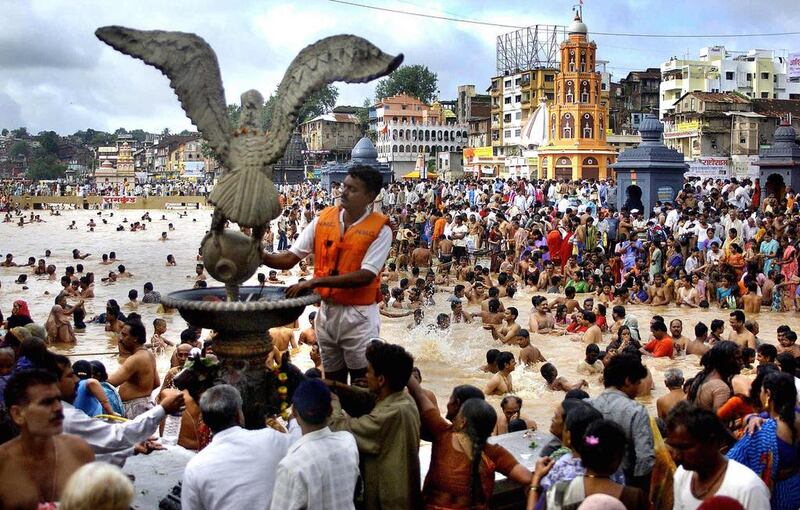Mumbai // India’s mass Hindu pilgrimage, the Kumbh Mela, officially starts in Maharashtra state tomorrow, with organisers desperate to avoid a repeat of a deadly stampede at the same venue 12 years ago.
Thirty-nine pilgrims were trampled to death and dozens injured when the religious festival was last held on the banks of the Godavari river in the city of Nashik, around 160 kilometres north-east of Mumbai, in 2003.
“We have learnt lessons from that stampede and have changed the route for the ‘Shahi Snan’ [main dip] to avoid tight alleys and steep slopes to the bathing ghats [steps leading to the river],” Nashik district information officer K Moghe said.
“We have also widened the bathing ghats in Nashik and Trimbakeshwar to provide more space and avoid over-crowding. That should prevent the major triggers for a stampede,” he added.
The deadly crush at Nashik was believed to have been triggered when a sadhu, or holy man, threw coins into a crowd of pilgrims who were waiting on the river banks.
Tens of thousands of the devotees, forced to stand behind barricades, were reportedly getting increasingly restless while having to wait for their holy dip.
When the coins were thrown they scrambled to gather them resulting in dozens of people suffocating, according to reports at the time.
A flag hoisting early tomorrow marks the official opening of the 2015 Kumbh Mela, which is held every third year and is rotated between four holy sites.
The Kumbh Mela is held at Nashik every 12 years and although it is not on the same scale as the editions on the Ganges at Haridwar and the Saraswati at Allahabad, it still draws millions of pilgrims.
Nashik is also unique out of the four venues in that it has two main bathing sites, stretching the emergency services across a wide area.
“We expect somewhere between eight million to ten million in total to attend the three key bathing dates and 20,000 police personnel are being deployed,” said Mr Moghe.
“There will be clearly marked staging areas for the emergency services at key points during the ceremonies and a dedicated road will be kept clear to allow them to respond quickly.
“We’re also setting up a temporary intensive care unit to provide on-the-spot emergency care,” he added.
The three main bathing dates fall on August 29, September 13 and September 18.
The Kumbh Mela has its origins in Hindu mythology, which describes how a few drops of the nectar of immortality fell on all of the places that host the festival, the fourth being Ujjain in central India.
*Agence-France-Presse





